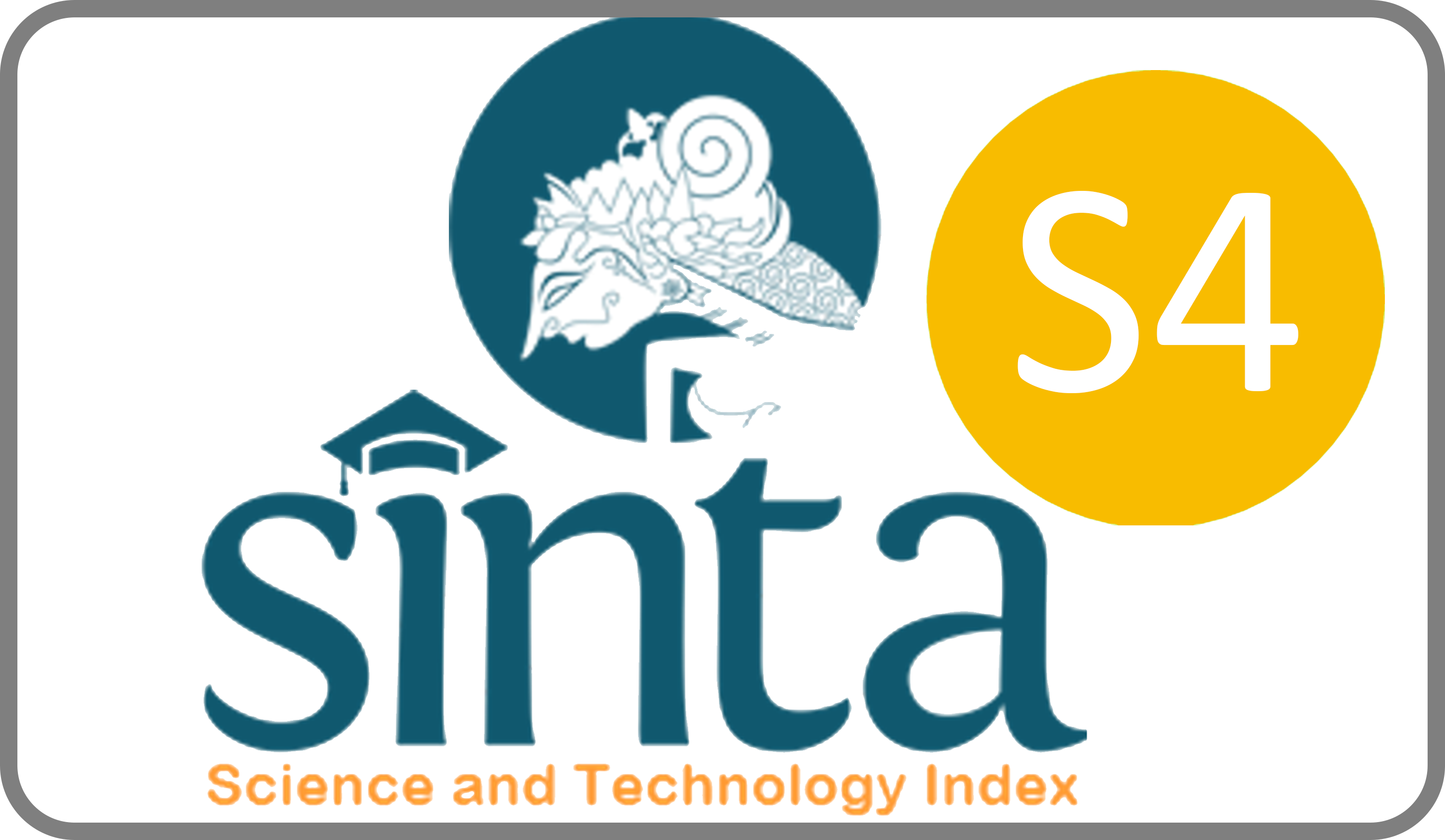THE EXAMINATION OF URINALYSIS PROFILES OF PREGNANT WOMEN AND TODDLER AS AN EFFORTS OF SCREENING THE POTENTIAL OCCURRENCE OF STUNTING INCIDENTS AND LOW BIRTH WEIGHT BABIES IN PENJARINGAN FLATS, RUNGKUT DISTRICT, SURABAYA
Downloads
Penjaringan Sari Flats is a solution implemented by the Surabaya City Government to overcome the limited housing in Surabaya. Due to the high number of residents , Penjaringan Sari Flats have a rapid and spread infectious rate. One of the impacts of infectious diseases that may be experienced by pregnant womenand also children under five aged is low birth weight (LBW) babies and stunting. One solution to reduce the number of stunting and LBW that can be done is screeningat early conditions of infection in pregnant women and toddler using the urine examination method (urinalysis). In examining a urine sample which is examined using the dipstick method (urinalysis using strips), 11 parameters can be read. Three of the eleven dipstick parameters (nitrite, leukocytes, and protein) were stated to be sufficient to screen a patient's initial infection profile. Participants in this community service activity are residents of Penjaringan Sari flats who are female, pregnant, and/or small children aged up to 5 years. The first stage carried out was the introduction of this program and activity plan to the Head of Penjaringan Sari Subdistrict. Data collection on the number of pregnant women and toddlers in Penjaringan Sari Village using observational methods. Data collection was carried out personally by the Head of Community Service accompanied by local women community. The number of pregnant women is 40 and toddlers are 60 as of August 2023. The results of urine sample examinations from 74 patients from residents of Penjaringan Sari Subdistrict are divided into two different categories: pregnant women and toddlers. In the category of pregnant women, around 90% of patients had positive leukocyte results, 60% had proteinuria, and 10% showed positive urine nitrite. In the second group, namely toddlers, the results showed that around 58.13% showed positive leukocytes, around 16.27% experienced proteinuria, and 4.65% of toddler patients had positive nitrite values.
Aghnia, H. (2018). Profil Kependudukan Penjaringan Sari. Jurnal ITS.
Aitekenov, S., Gaipov, A., & Bukasov, R. (2021). Review: Detection and quantification of proteins in human urine. Talanta, 223(Pt 1), 121718. https://doi.org/10.1016/j.talanta.2020.121718
AL Rahmad, A. H., & Miko, A. (2016). KAJIAN STUNTING PADA ANAK BALITA BERDASARKAN POLA ASUH DAN PENDAPATAN KELUARGA DI KOTA BANDA ACEH. Kesmas Indonesia; Vol 8 No 2 (2016): Jurnal Kesmas Indonesia. https://jos.unsoed.ac.id/index.php/kesmasindo/article/view/151
Balitbangkes. (2021). Stunting.
Berhandus, L. A. H., Mongan, A. E., & Wowor, M. F. (2016). Gambaran nitrit urin pada pasien tuberkulosis paru dewasa di RSUP Prof. Dr. R. D. Kandou Manado. Jurnal E-Biomedik, 4(2), 2–7.
Buku Saku Hasil Studi Status Gizi Indonesia (SSGI) Tingkat Nasional, Provinsi, dan Kabupaten/Kota Tahun 2021. (2021).
Pertiwi, W. E., Annissa, A., & Polwandari, F. (2022). Faktor Tidak Langsung Penyebab Kejadian Bayi Berat Lahir Rendah (BBLR). Jurnal Ilmu Kesehatan Masyarakat, 11(02), 151–159. https://doi.org/10.33221/jikm.v11i02.1058
Sutrisno, E. L. (2009). The Oral Story of Everyday Life in Rumah Susun Penjaringan Sari Surabaya. In Inside Surabaya: A Portrait of Urban Living.
Tondok, M. S., & Tonny, O. (2012). No Title. National Conference: Promoting Harmony in Urban Community.
Whiting, P., Westwood, M., Watt, I., Cooper, J., & Kleijnen, J. (2005). Rapid tests and urine sampling techniques for the diagnosis of urinary tract infection (UTI) in children under five years: a systematic review. BMC Pediatrics, 5(1), 4. https://doi.org/10.1186/1471-2431-5-4.
Copyright (c) 2024 Amalia Ajrina, Ratna Wahyuni, taufiqurrahman sidqi, anita kurniati

This work is licensed under a Creative Commons Attribution-ShareAlike 4.0 International License.
JLM by Unair is licensed under a Creative Commons Attribution-ShareAlike 4.0 International License.
1. The journal allows the author to hold the copyright of the article without restrictions.
2. The journal allows the author(s) to retain publishing rights without restrictions
3. The legal formal aspect of journal publication accessibility refers to Creative Commons Attribution Share-Alike (CC BY-SA).
4. The Creative Commons Attribution Share-Alike (CC BY-SA) license allows re-distribution and re-use of a licensed work on the conditions that the creator is appropriately credited and that any derivative work is made available under "the same, similar or a compatible license”. Other than the conditions mentioned above, the editorial board is not responsible for copyright violation.


















